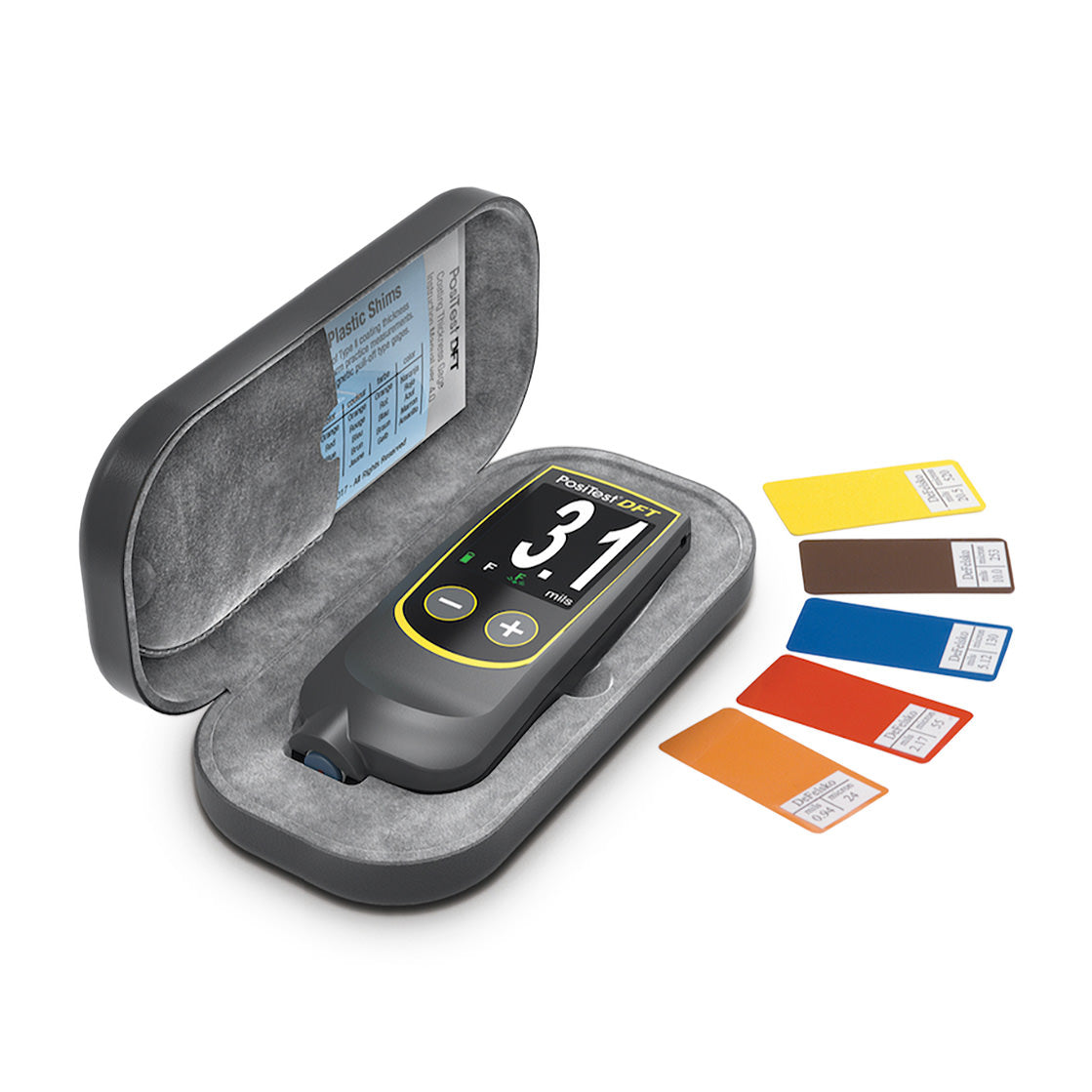

We Say
If you regularly machine polish a wide variety of cars whose history you cannot be sure of (e.g. is the paint original or has the car been resprayed at some point, has the car been subject to accident repairs in the past, how many times has the paint been previously compounded, etc.), the DeFelsko PosiTest DFT Paint Thickness Gauge could be one of the best investments you will ever make. This is because it enables you to quickly identify previous repairs, accurately assess how much paint you have to work with and precisely measure how much paint you remove as you polish (we are still regularly shocked by the number of detailers we come across who claim to be able to tell how thick paint finishes are by look or feel alone; this is simply not humanly possible). As a result, using a DeFelsko PosiTest DFT Paint Thickness Gauge serves as a form of safety net that will enable you to make informed decisions about how best to proceed in terms of machine polishing the car in front of you, which is critical given that most public liability insurance policies do not actually cover the car being worked on. We've owned our own DeFelsko PosiTest DFT Paint Thickness Gauge for over a decade now, and it's never let us down. It is a highly robust and faultlessly performing tool that we simply couldn't be without. Potential customers often ask us whether it's worth the outlay; in our opinion, it's priceless.
Key Features
Accuracy± 2 + 3 %(Factory Calibration)
Measurement Range0 - 1000(Microns)
Warranty2 Year(Return To Base)
Description
The DeFelsko PosiTest DFT Paint Thickness Gauge is ready for use straight out of the box and powers on automatically when placed on the panel to be measured. Measurements are taken almost instantly (in either microns or mils, selectable via the touch of a button), with on-screen averaging available for the last 99 readings. The all-in-one magnetic-induction and eddy current sensor measures paint thickness on all metal substrates, including steel and aluminium, making it ideal for use on high performance vehicles with lightweight metal panels. The sensor automatically detects the base metal and takes corrected readings accurate to within +/- 2 microns plus 3%, which equates to approximately +/- 5 microns on typical factory finishes. The DeFelsko PosiTest DFT Paint Thickness Gauge features an auto-rotating, high contrast colour display with adjustable brightness. This display is easy to read in all conditions and automatically switches off when not in use. The DeFelsko PosiTest DFT Paint Thickness Gauge comes with a formal certificate of calibration and the calibration itself can easily be checked with the supplied reference shims, or modified or reset if necessary. The DeFelsko PosiTest DFT Paint Thickness Gauge is supplied with a hard shell storage case, a wrist strap, a set of plastic reference shims, 2 x AAA batteries, full instructions and a two year return to base warranty.
Specification
| Accuracy | ± 2 Microns + 3 % |
|---|---|
| Battery Type | 2 x AAA (Alkaline) |
| Battery-Powered | Yes |
| CE Approved | Yes |
| Certificate Of Calibration | Yes |
| Measurement Range | 0 - 1000 Microns |
| Measures On Composite Panels | No |
| Measures On Metal Panels | Yes (ferrous and non-ferrous) |
| Net Weight | 77 g |
| Type | Combo |
| Voltage | 1.5 V |
| Warranty | 2 year return to base |
How To Use
The DeFelsko PosiTest DFT Paint Thickness Gauge is ready for use straight out of the box and powers on automatically when placed on surfaces to be measured. You should always ensure that the gauge is held perfectly flush to the surfaces being measured, as failure to do this will result in erroneous readings being recorded. It is quite normal for automotive paint to vary in thickness between different makes and models of car, from car to car, between adjacent panels and even across individual panels, and for these reasons it is always important to take numerous readings in order to get a proper feel for the average paint depth on the particular car you are working on. As a general rule of thumb we recommend making a minimum of 20-30 readings per panel, increasing beyond this in cases where unexpectedly low or high readings are obtained that are indicative of heavy compounding or accident repairs having been performed in the past. In terms of our own experience, it took many months of taking readings on a wide variety of different cars before we were able to piece together a mental framework of what to expect on different makes and models of cars in terms of average paint thickness and likely paint removal rates with various pad and polish combinations. Caution should obviously be exercised while gaining such experience.

